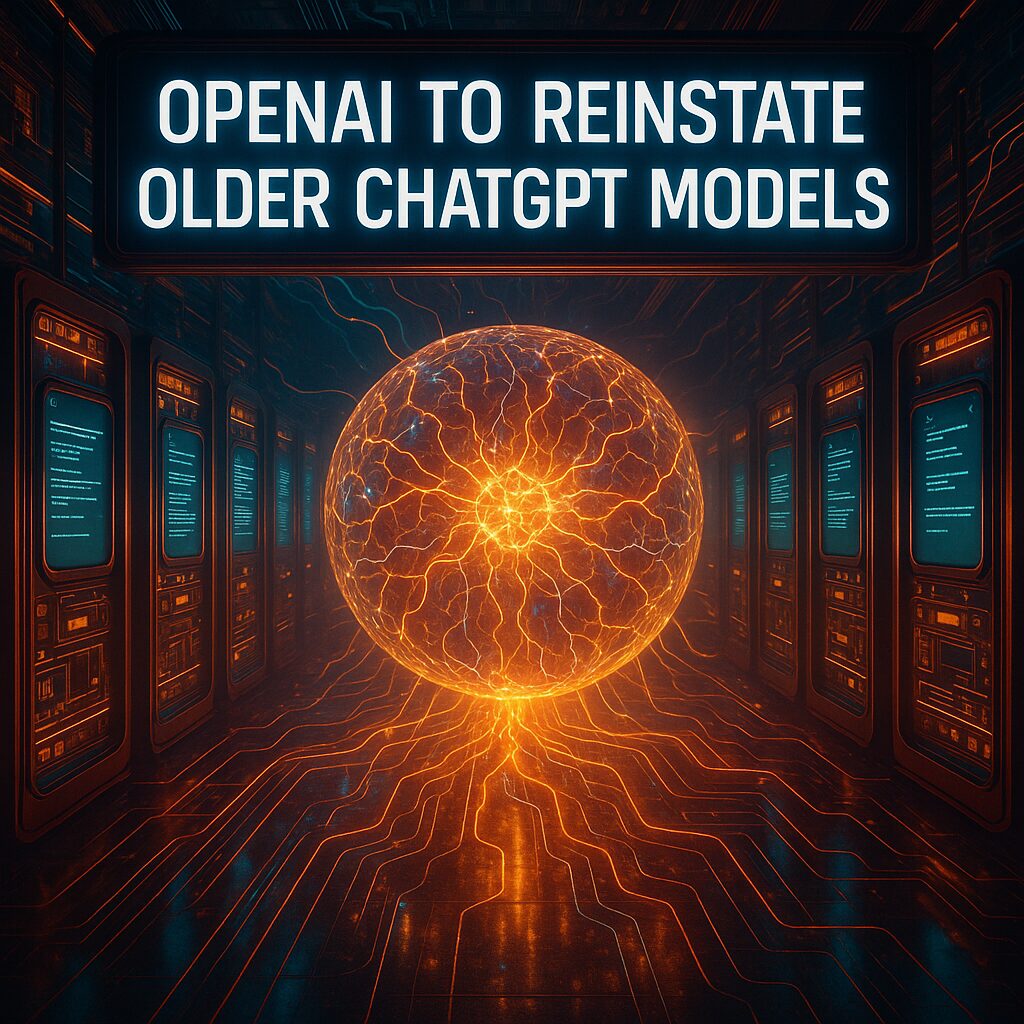
After User Backlash, OpenAI Is Bringing Back Older ChatGPT Models
# Navigating the Generative AI Landscape: Why Upgrading Isn’t Always the Best Move
In the fast-paced world of artificial intelligence, more and better are often synonymous with progress. However, the recent backlash against OpenAI’s GPT-5 upgrade suggests that sometimes the old adage, “If it ain’t broke, don’t fix it,” holds true even in tech’s cutting edge. With users clamoring for the knowable comfort of older AI models like GPT-4o, OpenAI is now reconsidering its one-size-fits-all upgrade strategy. Even as we marvel at the potential of advanced models, it’s crucial to recognize the human need for interaction that feels genuine and familiar.
## The Perils of Rapid Evolution
OpenAI’s original strategy was to streamline its ChatGPT offerings by consolidating various AI models into the newly minted GPT-5. The goal was to simplify and presumably enhance user interaction. Yet, not all welcomed this change. As users shared their grievances on platforms like Reddit, a common chorus of dissatisfaction surfaced—a lament for the friendlier, more approachable interactions they experienced with prior models.
One particularly poignant user comment captures the sentiment: “BRING BACK 4o. GPT-5 is wearing the skin of my dead friend.” This visceral reaction underscores a critical aspect of AI technology—it’s not just about processing power or enhanced capabilities; it’s about user experience. A successful interface must not only be efficient but also engaging, personable, and intuitive.
### Unexpected Hiccups
The rocky start of GPT-5’s rollout further compounded user frustrations. OpenAI CEO Sam Altman himself admitted that the release was “a little more bumpy than we hoped for.” Beyond the technical hiccups where the decision-making program failed to direct prompts efficiently, there was a stark realization: the newer, supposedly superior model didn’t meet all users’ expectations. Some described GPT-5 as “short” and “cold,” a troubling downgrade from their experience with GPT-4o.
## The Values at Stake
OpenAI faced an important decision point: listen to the loyal user base or stubbornly push forward with its newest model, potentially alienating the very people who propel its innovations forward. Altman addressed these concerns directly, promising to consider making GPT-4o or other older versions available for ChatGPT Plus subscribers. “We hear you all on 4o,” Altman assured users, a necessary acknowledgment of the critical balance between innovation and user satisfaction.
This period of reflection highlighted several pivotal values in AI development:
– **Usability**: Users need models that are not just powerful but also easy and enjoyable to interact with.
– **Familiarity**: Trust is built over time, and models that users know and trust shouldn’t be carelessly discarded.
– **Responsiveness**: Companies must be willing to pivot and adapt based on consumer feedback, ensuring that their products meet genuine needs.
## Learning From Experience
This experience with GPT-5 offers a rich learning moment for both developers and users. For developers, it emphasizes the necessity of user-centered approaches when rolling out upgrades. Understanding the user’s evolving needs, alongside technological capabilities, should guide product development. Users, on the other hand, are reminded of their power and influence. Feedback is not just beneficial—it is essential, driving companies to maintain a dialogue with their audience rather than dictating terms unilaterally.
### Keys to Navigating AI Updates
1. **Engage Early and Often**: Communication shouldn’t be limited to release notes. Engage users during development stages to obtain real-world insights.
2. **Offer Choices, Not Ultimatums**: Giving users the option to choose which version they prefer ensures loyalty and satisfaction, as evidenced by the demand for GPT-4o.
3. **Value Feedback**: Actively collecting and acting on feedback protects against negative user experiences and highlights potential areas for growth.
## Where Does AI Go from Here?
So, we’re left with open-ended questions about the future of AI deployment. OpenAI’s situation invites contemplation: When should tech companies pause and really listen? At what point should satisfying user demands take precedence over showcasing advancement?
The fallout from GPT-5’s launch has crucial implications for future AI development strategies. Even as technology continues to advance, the human aspect remains critical. The balance between cutting-edge capabilities and the warmth of intuitive design will define the next generation of AI interactions. This incident not only challenges developers to innovate but to do so in a way that users embrace, rather than endure.
In the end, the engagement with users over the GPT-5 debacle serves as a poignant reminder of one crucial aspect: who truly decides what’s a breakthrough—is it the developers, or is it the people who use these technologies to enhance their day-to-day lives?
As we ponder this, the role of feedback, choice, and adaptability in the ever-evolving world of AI becomes clear. How might the lessons from this experience shape your interaction with technology? And moving forward, how will tech companies ensure that progress in AI doesn’t come at the cost of the connection?

